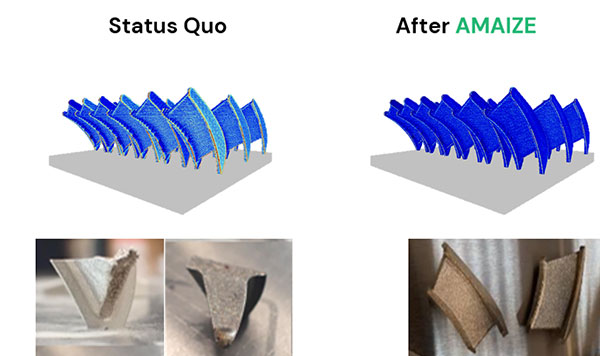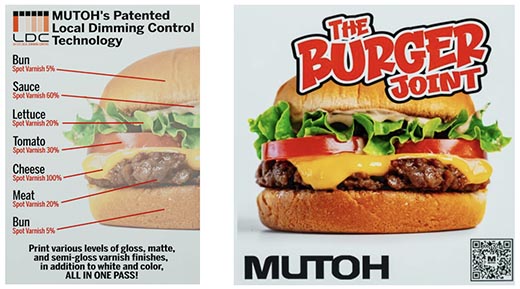Additive manufacturing (AM) emerged as a fast prototyping know-how within the late Eighties. During the last 4 many years, {hardware} and software program makers have gathered a very good understanding of what prints properly, and what doesn’t, permitting them to combine the data into their print preparation software program to nudge customers away from designs which might be destined to fail.
The following step on this evolution is the incorporation of AI (synthetic intelligence). Some main design for AM (DfAM) software program makers are already hedging on this path. On this article, we communicate to them to grasp how the transfer will change AM functions.
Let the AI Type it Out
Materialise gives AM companies and software program options targeted on industrial and healthcare functions. For Bart Van der Schueren, chief know-how officer of Materialise, the dental discipline is an space the place he can clearly see the advantages of AM.
“You could have bridges, partial bridges and crowns. With AI and machine studying, it’s now potential to acknowledge these objects from their geometry,” he says.
This synthetic intelligence (AI)-based form recognition has an influence in automating varied points of print preparation, he factors out. “Every kind of topology has a selected orientation that’s finest for a machine, has a selected assist construction it wants, and requires particular print parameters,” he says.
With AI-based object recognition, “the operator can merely drag and drop these topologies onto the platform and let the AI classify them. Equally, in [computed tomography (CT)] scans, AI can acknowledge the kind of bones based mostly on the scan information,” he explains.
Monitoring Defects
One other space the place laptop imaginative and prescient provides worth is within the print course of itself. AI packages can understand, detect and report way more than the human eye. “In closely regulated industries like aerospace, the price of printing is just about 30% to 50% of the manufacturing value. The remainder goes to high quality management.

Earlier than and after of a part with points associated to poor down pores and skin high quality on the 30° overhang and native overheating on the tip. After correction with AMAIZE, the part was printed appropriately with out assist constructions. Picture courtesy of Autodesk and 1000 Kelvin.
“AI can already monitor and determine parts that aren’t adequate, people who have inside defects that aren’t seen to the bare eye. That saves quite a lot of high quality management efforts through the post-processing of the parts,” he explains.
Immediately, Van der Schueren doesn’t suppose AI packages are mature sufficient to reliably predict print failure earlier than the printing course of, but it surely’s solely a matter of time.
“We will begin utilizing the details about defects gathered through the printing course of to grasp the basis causes, then mix anomaly detection with simulation know-how. This can assist to see correlations between simulation outcomes and defects,” he says.
He believes extra calibration is required to fine-tune the present AM simulation fashions to allow them to precisely predict the place and the way print failure would possibly happen. A hurdle that stands in the way in which of higher AM simulation fashions, Van der Schueren famous, is the dearth of knowledge.
“For machine studying to work properly, we have to have a lot of information. However what we regularly see is that customers don’t need to share their information as a result of they think about it their very own proprietary data,” he notes.
Failure Mechanism
Simulation software program maker Ansys’ portfolio consists of the Ansys Additive Suite, particularly tailor-made to AM tasks.
“The extraordinarily high-fidelity steel Laser Powder Mattress Fusion (LPBF) Thermal Pressure simulation inside the Additive Suite functionality in Ansys Mechanical can simulate based mostly on each particular person scan vector in a construct,” says Christopher Robinson, senior mission supervisor at Ansys.
Simulation is the important thing to understanding the thermochemical actions concerned in 3D printing, and in addition to understanding the failure mechanisms.
“Failure is a phrase with a broad definition. Many components are constructed to completion, however they nonetheless fail to fulfill efficiency, floor or geometric tolerances,” Robinson explains.
He notes that many mechanisms can result in failure, equivalent to recoater interference, half or assist cracking, extreme deformation, thermal overheating, demarcations or shrink strains, misunderstood grain constructions, porosity, floor roughness, and others. There are numerous sorts of simulation solvers that can be utilized to unravel such challenges, starting from structural, thermal, fluid and discrete component solvers to inference-driven AI fashions based mostly on simulation or empirical information, in keeping with Robinson.
A Technique to Practice Your Personal AM AI
There are normal guidelines relevant to all AM geometry. For instance, skinny partitions will possible collapse throughout printing and sure overhanging options will want assist constructions throughout print. Even with out AI, many print-preparation instruments can acknowledge these issues from the CAD mannequin and suggest fixes. However the success or failure of a job will depend on one thing else in addition to geometry: the print {hardware}.
As a result of every printer has its personal distinctive print procedures, from thermal administration to powder deposit, it impacts the printed object in a different way. A design that prints efficiently in a single machine would possibly fail in one other. A design that distorts little or no in a single machine would possibly warp past the usable level in one other. Subsequently, print failure prediction based mostly on {hardware} would require extra AI coaching.
To resolve the dilemma, “It’s necessary that, as an organization, we don’t simply give pretrained fashions to our clients, but in addition give them a solution to simply prepare the fashions additional with their very own information,” Van der Schueren suggests.
Robinson factors out, “Even inside the identical course of, in the event you change supplies or machine distributors, or fluctuate processing parameters, or have completely different airflow inside the machine, or completely different power supply profiles, then it’s potential to run into conditions the place buildability is just not constant.”
With the launch of SimAI early this yr, Ansys is hoping to serve the identical want.
“AI built-in with simulation might help to make ultra-high-fidelity simulations obtainable to customers that can take the subsequent step past generic predictions. For instance, you’ve the choice of simulating based mostly off an LPBF construct file, the place you possibly can actually begin to perceive machine-specific particulars,” says Robinson.
Pretrained to Predict
Omar Fergani, CEO of 1000 Kelvin, has a very good understanding of failure mechanisms. He was an AM software engineer in his early profession. He did his Ph.D. on residual stress at The Georgia Institute of Expertise as a result of he was, as he put it, “fascinated with fixing this downside.”
1000 Kelvin describes its providing as a “one-stop store AI software program to foretell close to real-time print points, carry out corrections, and generate industrial-grade, ready-to-use print information particular to your machine.”
Fergani explains, “As a substitute of giving a finite component evaluation (FEA) software program product to an engineer to unravel their AM issues, we determined to take the FEA solvers, prepare machine studying programs, make them extraordinarily highly effective when it comes to velocity, effectiveness, optimization after which bundle them as a product for the engineers.”
Because of the time it takes to faithfully simulate AM occasions utilizing conventional finite component evaluation, the usage of machine studying fashions is inevitable, Fergani factors out. “If you wish to simulate part-level deformations, it solely takes just a few hours. However if you wish to simulate it on the soften pool stage, usually it takes two hours to compute 2 millimeters of toolpath, and printing a component normally requires 1000’s of kilometers of toolpath …,” he calculates.
Some laser- and toolpath-related modifications that happen within the print course of are just too sophisticated to simulate, in his view.
“However deep studying or AI fashions can truly make predictions of these items,” he says. “Each time we do a prediction for thermal optimization, it’s machine-specific and material-specific. It’s not a problem for us as a result of we’re computationally environment friendly. It takes just some minutes to do that evaluation.”
As soon as this step is feasible, the subsequent step turns into a lot easier. “Now, you possibly can ask our software program to offer you a brand new print technique or print recipe to keep away from the failures,” he says.
1000 Kelvin has been quietly growing and testing its product, but it surely feels it has reached maturity to scale up. The corporate is now partnering with Autodesk to convey the AI-trained fashions into Autodesk Fusion and different designer-targeted software program.
“We see Autodesk Fusion because the platform of innovators, engineers and designers. With the staff of Autodesk, we built-in our AI fashions in our product to foretell failures, mechanically appropriate the design, and provides it again to you. That new product from the partnership will democratize AM. With that, you possibly can consider AM as a simple-to-use know-how,” says Fergani.

